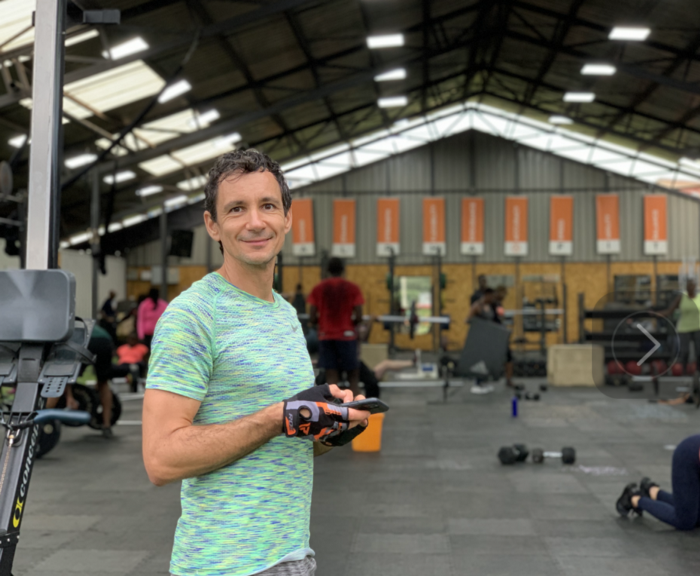- By Emilian Popa
- July 21, 2022
- 8:08 am
- No Comments
In the business of everyday life it can be easy to overlook the small things that have a big impact on our health. Here are some commonly forgotten yet essential practices which I include into my day for optimal wellness and a long, happy and healthy life — and which I would recommend to anyone around me:
Sleep for 7–8 hours per night
When you do not get restful, deep sleep — damaged proteins and other toxins build up in the brain, leaving you feeling foggy and more vulnerable to rapid brain aging. Some healthy sleep habits you can adopt and lifestyle changes you can make include:
• Having your last cup of coffee before noon so the caffeine is out of your system by the time you are ready to hit the sheets
• Wearing a pair of blue light-blocking glasses as darkness falls and avoid screens and bright artificial lights two to three hours before bed
• Using relaxation practices such as meditation or deep breathing to calm your mind and help you drift into sleep
I still remember when, only 7–8 years ago, when my mom pointed out how damaging my 5 hours a night sleep was to my health and my response was: I’ll sleep when I’m dead. Now, my sleep is so important to me, that in addition to incorporating practices into my day to improve my sleep, I also monitor my sleep quality. The Oura Ring is my favorite sleep tracker and it measures sleep using sensors that gauge body signals including my heart rate and body temperature. Consider using tools to track your sleep to create awareness about the actual amount of sleep you are getting and help you make sleep a priority.
The amazing team from the Biohacking Center (Finland / Estonia) wrote an entire book on health optimization, and here is a snapshot of how optimal sleep should be quantified:
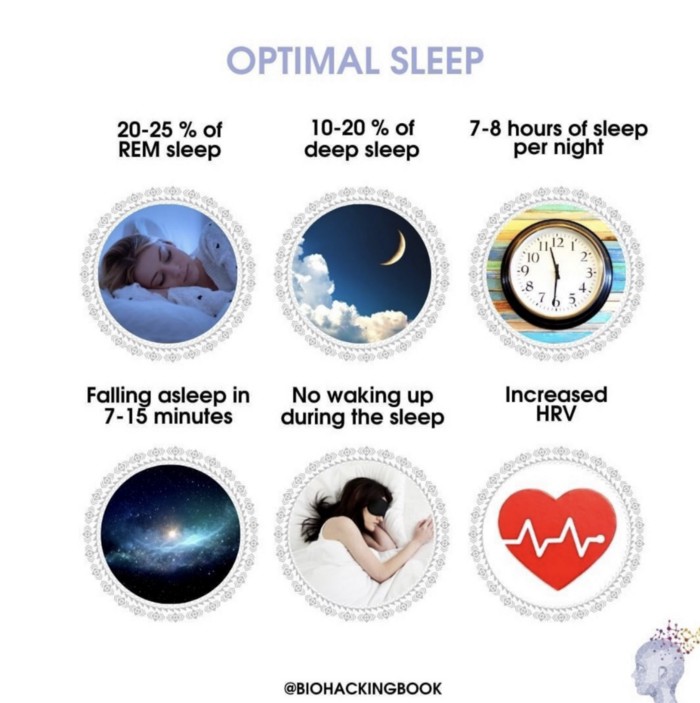
And because you can’t improve what you don’t measure, here are few ways to measure the quality of your sleep (I use the Oura ring and the Sleep Cycle app):
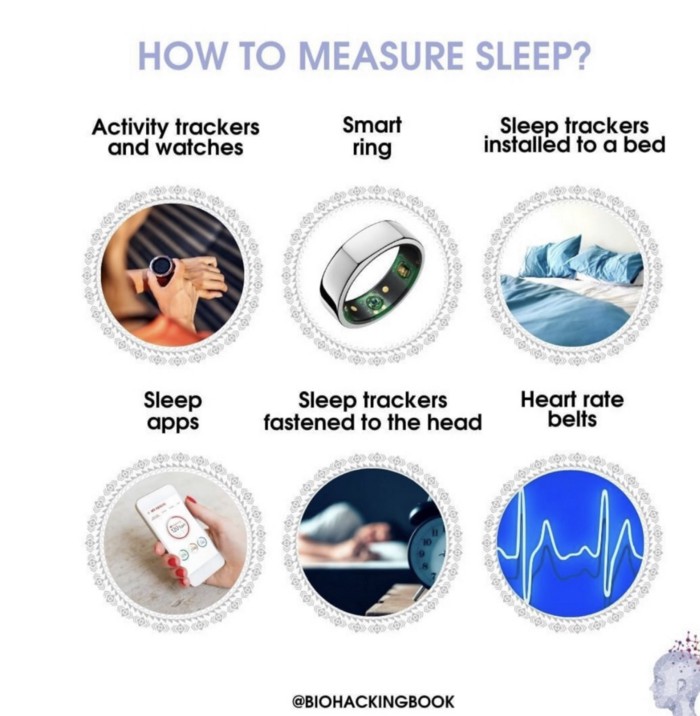
And while this “perfect bedroom” may seem over-engineered, if you really want to optimize your sleep to the end, and wake up ready to conquer the world, I would recommend using at least some of those elements:
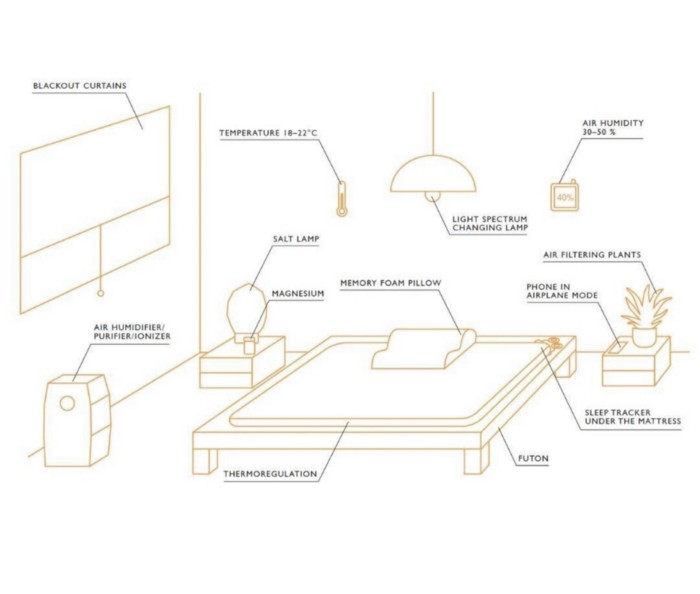 Get some sunshine or sit in front of an infrared panel
Get some sunshine or sit in front of an infrared panel
Your circadian sleep rhythm is your 24-hour internal clock, and is tied closely to the sun and the light you take in from your environment. It’s beneficial to follow your body’s natural patterns for sleeping and waking. One way to maintain a healthy circadian rhythm is to go outside and feel the sun on your face and arms and legs every day for at least 15 minutes. During Covid, I discovered that a fast 30-minute walk in the sun, gives me an energy boost to start my day and I haven’t stopped since.
I am also fortunate enough to spend most of my time in sunny countries — but you can’t always count on natural light. Our modern lives keep us inside much of the day, and the weather doesn’t always cooperate even when we can get outside. A solution is to sit in front of an infrared panel for at least 15 minutes a day. Red light therapy is a simple, non-invasive treatment that uses LEDs to deliver wavelengths of infrared light directly to the skin and cells. This enhances cellular function by supplying cells with the light needed to make the energy to powers your body.
Here is a red & infrared panel inexpensive installation, which I recently sourced / home-built:
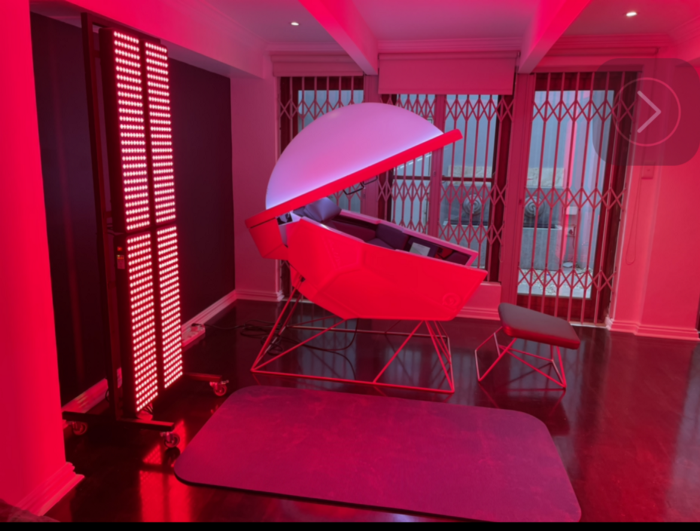
Move your body regularly
Our inactive work and home life are contributing to accelerated aging — triggering the onset of numerous health concerns including obesity, cardiovascular disease and diabetes. The real key to aging well is to lead an active lifestyle and move as much as you can. It is important to build movement into your regular day — getting up to stretch every hour or so, using stairs instead of the elevator or taking a short walk a few times a day. And if you can add a more vigorous work-out to your schedule (running, swimming, yoga, Pilates, CrossFit or high intensity interval training (HIIT)), the better off your body will be.
I do 30–45 min HIIT sessions 3–4 times a week, home workouts using my body weight or at my xfit gym. For the rest of the day, I try to move as much as I can, doing my calls while walking (tip: if I have a zoom call I typically ask the other people in the call if the fact that I move constantly bothers them). I also do push ups or squats or other body movements every few hours or so to keep my body moving regularly.
